Rifles by countries and continents. Part of 19. Mauzers of Serbia and Yugoslavia
As always, first in 1879, in Serbia, a commission was established to select a new rifle, with Kostya (Koku) Milovanovic, a military designer, appointed chairman. The Commission announced an international competition for which designers and manufacturers of rifles from various countries of the world were invited.
The MXN Mauser M1871 / 78 attracted the attention of Koki Milovanovic, who decided to improve her ballistic qualities by applying a cartridge with a black powder caliber 10.15xXNNUMXR to her and changing the barrel cutting. reduce the width of the grooves in the direction from the breech to the muzzle.
As a result, in 1880, the Mauser rifle with Milovanovic changes was adopted by the Serbian army under the designation "Mauser-Milovanovic M 1880". She is also known under the names "Mauser-Kok" and "Kokinka." 100000 rifles ordered the firm "Mauser", where she received the index M 1878 / 80 ".
In 1884, the Serbian army entered the rifle with barrel gantry tubes. In total, 4000 carbines for cavalry and as many for artillery were obtained. Interestingly, some of them survived until the 1937 year, when they were converted to 11-mm cartridges from Gra's rifles.
The original bolt of the Mauser rifles was not subjected to any changes. Shutter handle - straight. Unlocking the shutter occurs when it is turned to the left. Spring ejector mounted on the combat larva of the bolt.
The fuse of the flag-type switch, as well as on the original sample, is located in the rear part of the stem of the gate. When turning the "flag" on 180˚, he locks the drummer, which does not allow both to shoot and to open the shutter.
At that time, almost all rifles were of the English-type lodges. So on the “Serbian Mauser” it was the same: that is, it had a long forearm and a straight butt neck. The steel butt plate of the butt was L-shaped and attached to the bed on the screws. The rifle's frame sight was designed for firing a distance from 500 to 2700 steps, that is, from 300 to 1600 meters.
The rifle in the shortest possible time began to produce in Germany at the factory Mauzer brothers, so that the first copies arrived in Serbia at the end of 1881, and the most recent - in February 1884 of the year. In addition to 100000 rifles, additional barrels were additionally ordered in the number of 1000 units and around 125000 other parts. The rifle weighed, again, like most rifles of those years, 4,5 kg. The speed of the bullet was 510 m / s.
Serbian Mouser M1899, identical to the Chilean model 1895 (Army Museum, Stockholm)
In the 1899 year, while being loyal to the “Mauser”, Serbia ordered the M1899 rifles of the year, which were an analogue of the “Chilean Mauser” M1895. Initially, they were produced under the chambered 7x57 mm at the DWM factories, but in 1924 they were re-resolved under the caliber 7.92x57 mm. All Serbian rifles received at the end of the designation МХNUMXС, where the letter "С" is "Serbia". Recall that the Mauser 1899 model was also used in Mexico, Costa Rica, Paraguay, Iran, El Salvador and Honduras.
The use of smokeless powder led to the fact that from 1907, around 50000 rifles were converted at the Serbian enterprise in Kragujevac for firing cartridges with smokeless powder of a reduced caliber 7x57 mm and with a five-charge magazine. These rifles were called “Mauser-Milovanovic-Djurich M 80 / 07”, and M1899C rifles, respectively M1899 / 07С.
Coca Mauser
The next model of the “Serbian Mauser” was the M1910 rifle, which turned out to be the first Gewer 98 model on Serbian soil. It was produced at the plant in Oberndorf from 1910 to 1911 year and then also received the letter "C".
Naturally, all these rifles Serbia most actively used on the fronts of both Balkan wars and during the First World War.
New public education - Yugoslavia, in turn, wished to have a new weapon under the new cartridge. In 1924, FN purchased machines that came from 1924 to 1927 for the production of rifles of the model 1924 of the year for German cartridges of caliber 7.92xXNNXX mm.
In Yugoslavia, this rifle was produced under the official name M1924 ČK. The abbreviation "Cheka" is translated as "Chetnitsky carbine", that is, the carbine used by Chetniks, who were considered elite units in Yugoslavia since the pre-war period.
Yugoslav rifle M1924. (Army Museum, Stockholm)
The design of the rifle was similar to the Belgian model. The bolt handle was curved for greater comfort when shooting and increasing the rate of fire. The length of the barrel was now 415 mm, and the entire rifle - just 955 mm. True, it is believed that the sound of a shot from her was too loud and as a result, the arrow in the ambush could be easily detected, and the recoil when fired at the shoulder was too strong. Accurate data on the initial speed of the bullet is not, as well as on the accuracy of shooting, but most likely they did not differ from the data on the Belgian rifle FN Model 1924.
In addition to the Chetnitsky variant, a “Sokol” carbine was also produced in Yugoslavia, which, like any carbine, was lighter than a rifle in mass, but had a smaller firing range. Both options had the same bayonet. In Western European literature, it is often called the “dagger of King Alexander’s guard.”
In Yugoslavia itself it was called “Kolashinac”, and it was a very popular cold weapon of Chetniks and partisans: they were used by so-called “Kolyachi” - Chetniks, who were engaged in personally executed traitors, prisoners and spies, with which they simply cut their throats . In the German army, the Yugoslav rifles were armed with parts of the Wehrmacht and the SS under the name G289 (j) or "Jugoslawisches Komitengewehr 7,9 mm."
In 1947, the production of the M.24 / 47 rifle began. In fact, it was a mixture of Yugoslav and Belgian parts, that is, something that was easier to do on the spot, and more difficult - they were taken from warehouses or ordered in Belgium.
Interestingly, the rifles of the M24 / 47 rifles were made of chestnut or teak in the old German imperial pattern, while the 98k made it from elm or beech. There were no metal parts in the rifle butt. M.24 / 47 - The production of this rifle began in 1947 on the basis of the Belgian and Yugoslav designs and continued until the beginning of the 1950-s. New details appeared on the samples or unnecessary old ones were removed.
A new version of the M. 24 / 52č turned out to be a variant of the Czechoslovak rifle vz. 24. Production began in 1952.
Rifle M48 with cartridges.
In addition, the M48 rifle, developed by Zastava and in service with the Yugoslav People's Army, was produced in Yugoslavia. It was a slightly improved version of the German Mauser 98k rifle and the Belgian Mauser M1924.
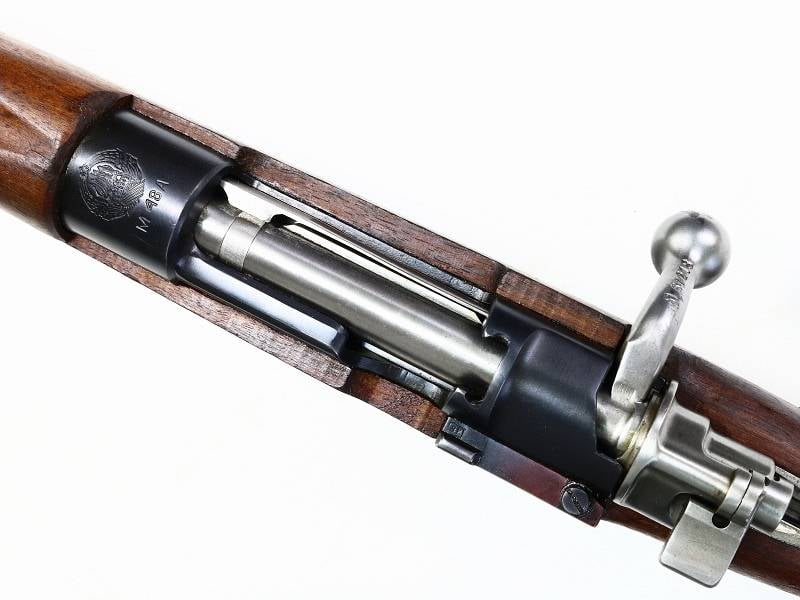
M48 rifle bolt.
Externally, Zastava M48 is similar to 98k, but it is shorter, that is, similar to M1924. At the same time, the M48 has a curved shutter handle, not a straight one like the M1924.
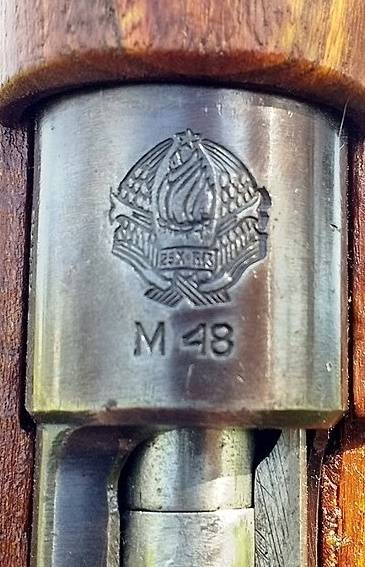
The coat of arms of Yugoslavia on the chamber of the rifle M48.
A limited batch of rifles in 4000 units was equipped with a sniper scope. Modification rifle M48BO was in service with the army of Syria. A significant part of the manufactured rifles was almost immediately transferred to warehouses, from where they were then sold to those whom Yugoslavia considered a promising partner in the fight against international imperialism.
Bayonet to the rifle M48.
To be continued ...
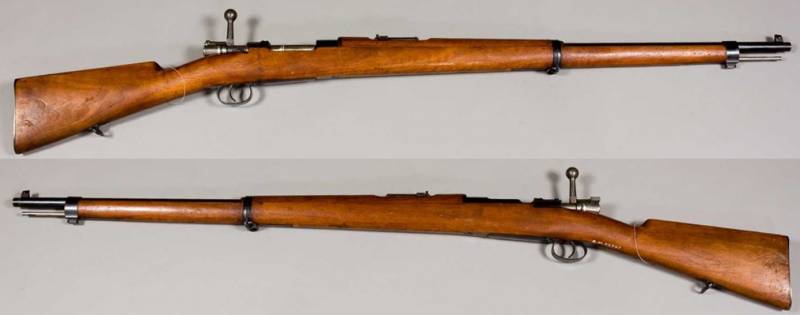
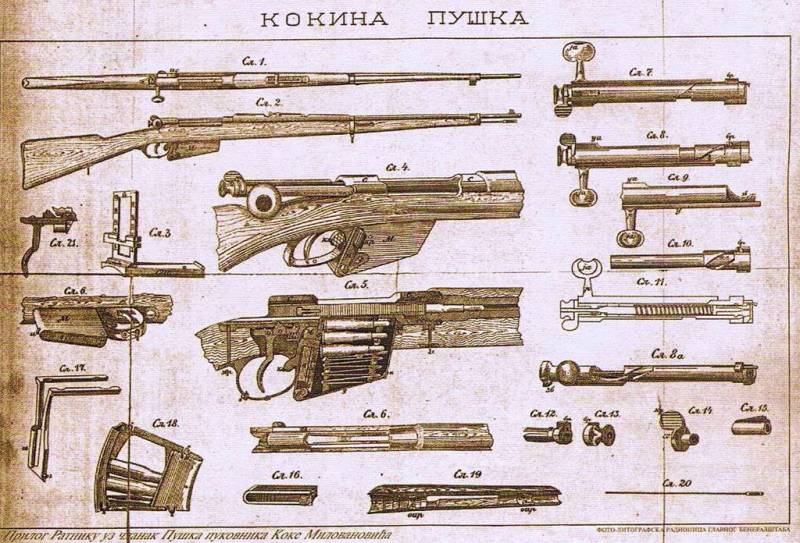
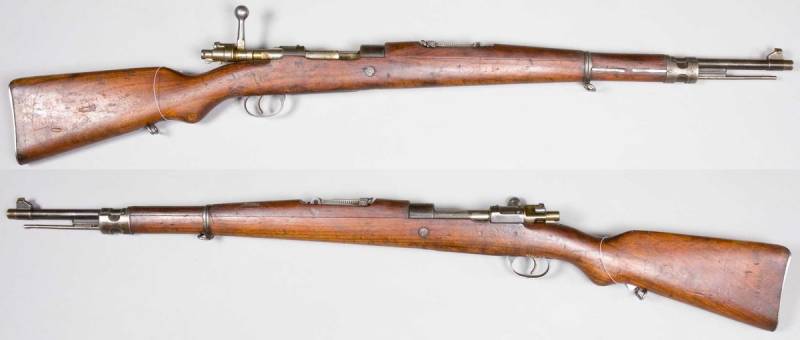
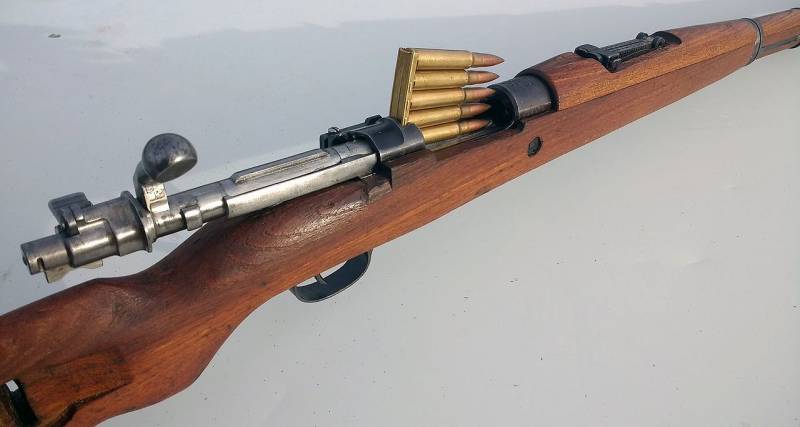

Information